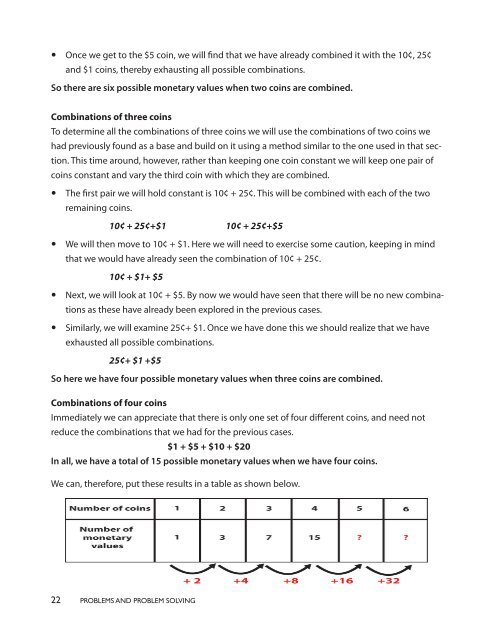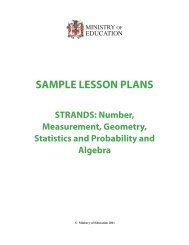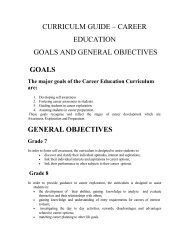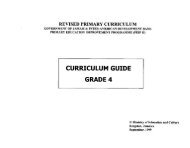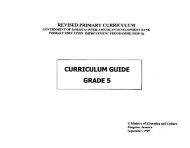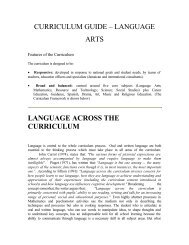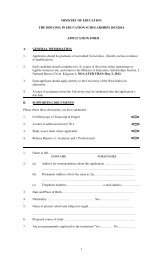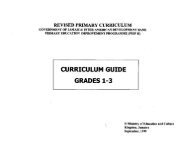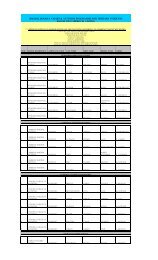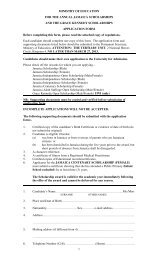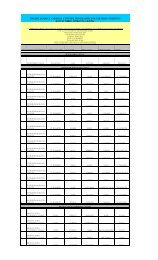Problems and Problem Solving - Ministry of Education
Problems and Problem Solving - Ministry of Education
Problems and Problem Solving - Ministry of Education
You also want an ePaper? Increase the reach of your titles
YUMPU automatically turns print PDFs into web optimized ePapers that Google loves.
•y<br />
Once we get to the $5 coin, we will find that we have already combined it with the 10¢, 25¢<br />
<strong>and</strong> $1 coins, thereby exhausting all possible combinations.<br />
So there are six possible monetary values when two coins are combined.<br />
Combinations <strong>of</strong> three coins<br />
To determine all the combinations <strong>of</strong> three coins we will use the combinations <strong>of</strong> two coins we<br />
had previously found as a base <strong>and</strong> build on it using a method similar to the one used in that section.<br />
This time around, however, rather than keeping one coin constant we will keep one pair <strong>of</strong><br />
coins constant <strong>and</strong> vary the third coin with which they are combined.<br />
•y<br />
The first pair we will hold constant is 10¢ + 25¢. This will be combined with each <strong>of</strong> the two<br />
remaining coins.<br />
10¢ + 25¢+$1 10¢ + 25¢+$5<br />
•y<br />
We will then move to 10¢ + $1. Here we will need to exercise some caution, keeping in mind<br />
that we would have already seen the combination <strong>of</strong> 10¢ + 25¢.<br />
10¢ + $1+ $5<br />
•y<br />
•y<br />
Next, we will look at 10¢ + $5. By now we would have seen that there will be no new combinations<br />
as these have already been explored in the previous cases.<br />
Similarly, we will examine 25¢+ $1. Once we have done this we should realize that we have<br />
exhausted all possible combinations.<br />
25¢+ $1 +$5<br />
So here we have four possible monetary values when three coins are combined.<br />
Combinations <strong>of</strong> four coins<br />
Immediately we can appreciate that there is only one set <strong>of</strong> four different coins, <strong>and</strong> need not<br />
reduce the combinations that we had for the previous cases.<br />
$1 + $5 + $10 + $20<br />
In all, we have a total <strong>of</strong> 15 possible monetary values when we have four coins.<br />
We can, therefore, put these results in a table as shown below.<br />
22 PROBLEMS AND PROBLEM SOLVING<br />
<strong>Problem</strong><strong>Solving</strong>.indd 22<br />
8/24/12 6:55:42 PM


